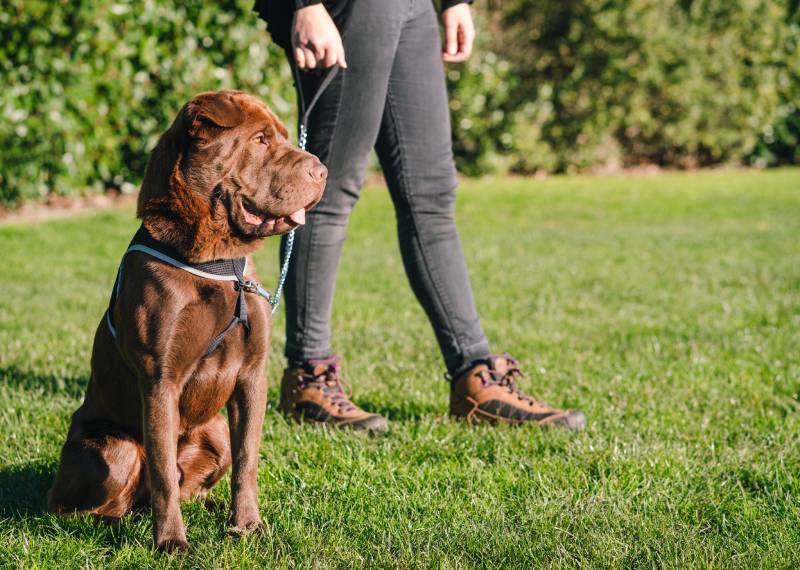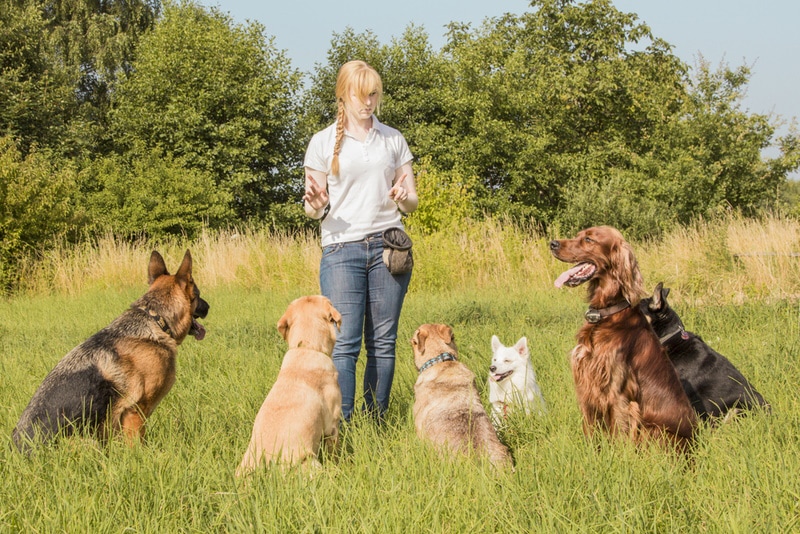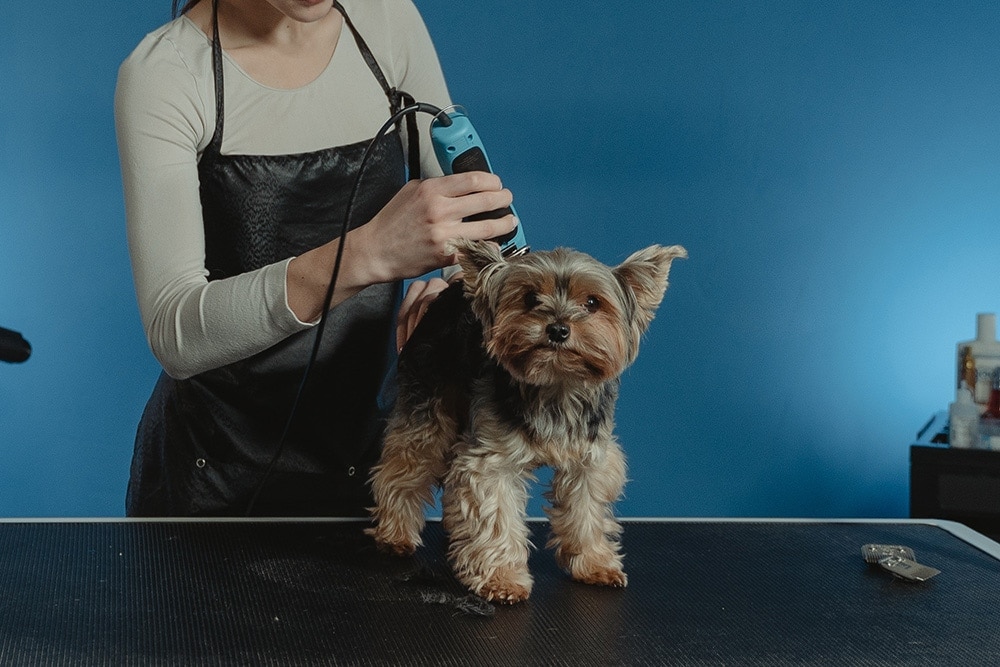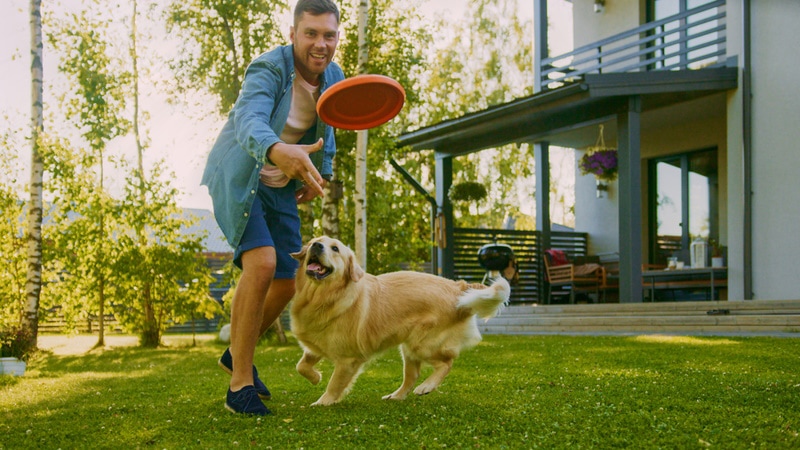9 Things to Consider Before You Foster a Dog: Vet-Approved Tips

By Misty Layne
Updated on

Sometimes, you want to lend your local animal shelter or rescue a hand, but you simply can’t take on another dog. You could donate money or volunteer a few hours occasionally to help out, but you could also consider fostering! Fostering is an excellent way to help shelters and rescues, especially if you adore being around animals but can’t adopt one at the moment.
Another wonderful benefit of fostering is that for every dog in foster care, another is able to be rescued, so fostering plays a vital role in allowing animal shelters to help as many dogs as possible.
There are a few things to consider before you foster a dog, though. While fostering may seem like less of a commitment, it still requires time and dedication. Here’s a look at the nine things to consider before you foster a dog.
The 9 Things to Consider Before You Foster a Dog
1. Costs
There will be some costs to fostering, but these costs will vary by shelter or rescue. Some shelters and rescues have shoestring budgets, which means you will need to provide a foster pup with all the basics, such as toys, crates, food, beds, etc. (Though these items don’t need to be brand-new and can be re-used when new foster dogs come through!) However, these shelters and rescues usually provide any medical care a dog may need.
Some places will have bigger budgets, so they might pay for the big fostering expenses, like food, medical care, and even spaying or neutering. But you still may need to purchase toys or bedding for your foster dog.
You may also spend more on gas than you did before, whether it’s because you and your foster are visiting the dog park regularly or because you need to bring your foster pup to a meet-n-greet adoption event.
Long story short, you will be spending some money while being a foster parent, and it should not be viewed as a cheaper alternative to having your own pet.

2. Emotional Attachment Risk
There are other costs of fostering, too, mainly the cost of emotional attachment. Falling head over heels for your foster pup isn’t an uncommon occurrence. After all, when you bring a foster dog into your home, you have no idea how long they’ll be staying with you. Some pups might stay weeks, but others remain months, and the longer you’re around a dog, the more likely you are to fall in love with them. So, be aware that this may very well occur with you. But also, know that it isn’t uncommon, and no one will judge if you are sad when your first foster pup gets adopted.
The good news is most foster parents say that this becomes easier to deal with over time, especially when you realize that each goodbye means that you have helped save another life, and there is usually another ‘hello’ just around the corner. But if the emotional costs don’t become easier for you, you may need to rethink taking in foster dogs.
3. Time Commitment
Fostering a dog is a huge time commitment. Many dogs that need to be fostered have some sort of special need, whether medical or behavioral, so you’ll need to spend extra time with them. You might need to aid them with socialization, give them medicine, and of course, shower them with love and attention. (Also, consider that if you have other pets in your home, all that attention given to your foster dog equals less time spent with your pets.)
Then there’s the length of a foster dog’s placement. You may not have a decent estimate of how long a pup will be staying with you, but fostering typically runs between 4 weeks and 3 months. This could mean you end up needing to change plans around for the amount of time the foster dog is with you, and you’ll almost definitely have less free time of your own.
There’s also a time factor in that you may need to take your foster pup to various places, like adoption events, check-ups, or routine healthcare.
Finally, be aware that a foster dog will need time to adjust to their new living situation. They may bark a lot or have accidents in the home until they figure out the routine. Be patient with them!

4. You’ll Need Patience
And speaking of patience, consider that you will need tons of it while being a foster parent! Foster dogs can range from those who are still relatively young and not yet potty trained to those who have been abused or neglected. You may find yourself needing to socialize a young foster pup or having to attend vet appointments for dogs who are ill.
Many foster dogs will have special needs of some kind, whether it’s needing to be trained, requiring tons of attention and love, or needing help with medical conditions. And all of these mean you must have a wealth of patience (and persistence!).
5. Your Home’s Environment
Your home’s environment can factor into whether you’re able to foster a dog. Shelters and rescues want to place animals in homes that are ready for animals. That means having enough space in your home for a dog, not having dangerous areas in the home a dog will be able to get into, ensuring there aren’t plants that are poisonous to dogs in the home etc. And if you have other animals in your home already, there should be a space set aside for the foster dog when they first enter the home.
Also, consider that a foster dog might damage your house. Dogs (especially those with behavioral issues) can engage in behaviors such as chewing on items they shouldn’t. Plus, accidents happen, so a dog could knock a breakable item over or go to the bathroom inside. All of these can cause damage to a home, so be sure to ask the shelter or rescue who is responsible for fixing any damage incurred by fostering.

6. Other Pets and People in the Home
Considering how other pets or people in your home will react to having a foster dog is also key.
For pets, you may encounter problems with the foster dog coming into the home with fleas or internal parasites. While most places recommend a quarantine period where the foster dog is separated from the rest of the household, your current pets could still be exposed. You might also encounter your pets and the foster dog not getting along. Current pets in the home might not like a stranger coming in and taking all the attention away from them, which could lead to antisocial or aggressive behavior. Also, if you have a foster dog with behavioral issues, any current dogs in your home could pick up their bad habits.
You must also consider whether other people in your home will enjoy having a dog around, and will they help with the foster pet. Finally, be aware that there are always risks with bringing a foster dog into your home, such as the possibility of the dog biting a person or other animal.
Whilst fostering is a wonderful thing to do, it shouldn’t be at the expense of the health and happiness of your pets or family.
7. Additional Responsibilities
We’ve already covered many responsibilities of a doggy foster parent, including potentially taking pups to medical appointments or adoption events, potty training, and socialization. Other responsibilities can include general care (feeding, daily exercise, love, and attention), potential obedience training, staying in touch with the shelter or rescue about how the dog is doing, and talking your foster dog up to potential adopters.
Your biggest responsibility as a foster parent to a pup is to provide a safe, loving environment where they can have their daily needs met.

8. Risks
We’ve mentioned a few risks associated with fostering so far. One is the possibility of injury to a member of your household. Another is the risk of damage being done to your property. Then there’s the emotional attachment angle. You might also find that a foster dog simply doesn’t fit into your home well because of their personality or something else.
The point is there are several risks associated with fostering dogs that you should consider carefully and weigh against the rewards!
9. Rewards
Fostering a dog leads to so many rewards! The most important one, though, is that by being a doggy foster parent, you can help save lives. After that, you’ll experience rewards like building up your doggie knowledge and expertise, meeting new people, having more companionship and fun in your life, and, of course, experiencing all the warm, happy feelings you get from doing volunteer work and hanging out with dogs.
There will also be rewards for the shelter or rescue because you’re helping them make room for more animals to come in by fostering. And, of course, your foster dog will reap rewards!

Conclusion
Fostering a dog can be an amazing and rewarding experience, but it does require a lot of time, work, and patience. Considering all the variables before committing to being a doggy foster parent is vital. You might find that fostering isn’t for you, and that’s okay! There are other ways you can help out your local rescue or shelter. If you decide to foster, though, you’re in for a fun (and challenging) time and lots of doggy love.
Featured Image Credit: Ripio, Shutterstock













